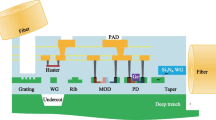Abstract
The traffic to be carried by today's European backbone networks increases very rapidly. An important portion of this traffic consists of data traffic (mainly IP-related). In the future data traffic is expected to become the abundantly dominant traffic type, while voice traffic will only account for a very small portion of the total traffic volume. In this paper, some network topologies for such a pan-European fiber-optic backbone network are presented (more details can be found in [1]). These topologies are compared in terms of the efficiency of the network design both from a cost and capacity point of view and in terms of the availability of the connections routed over this network. In order to be able to assess the network topologies under realistic circumstances, the expected traffic demand is forecasted. This enables to make the comparison for the current traffic volume as well as for the traffic patterns of the future. As not all types of (data) traffic require the same degree of survivability and in order to leverage the total capacity cost of the network design, a distinction is made between different recovery options in the optical layer for the different traffic types considered.
Similar content being viewed by others
References
http://ibcn.atlantis.rug.ac.be/projects/COST266_IST_lion/NRS/index.html
L. Roberts, C. Crump, US Internet IP traffic growth, Caspian networks, http://www.caspiannetworks.com/pressroom/press/08.15.01.shtml, (Aug. 2001).
The European Information Technology Observatory, http://www.eito.com
http://www.gnutellanew.com/information/what_is_gnutella.shtml
http://www.kazaa.com/en/help_general.htm
J. P. Morgan, Securities Inc Equity Research: Backbone! How changes in Technology and the rise of IP threaten to disrupt the long-haul telecom services industry, http://www.mckinsey.de/_downloads/knowmatters/telecommunications/backbone.pdf, Sept. 2000.
EISY-WAY, Evolution of information and communication and its impact on research activities, issue 2, (Aug. 1999).
http://www.cisco.com/univercd/cc/td/doc/product/mels/dwdm/dwdm_fns.htm
D. Colle, et al., Data-centric optical networks and their survivability, IEEE Journal on Selected Areas in Communications, special issue on WDM-based network architectures, vol. 20,no. 1, (Jan. 2002), pp. 6-20.
A. Dwivedi, R. Wagner, Traffic model for USA long-distance optical network, Proc. of Optical Fiber Communication Conference (OFC) 2000 (Baltimore, USA, March 2000), Vol. 1, TuK1-1, pp. 156-158.
http://www.carrier1.net
http://ww.ebone.com
http://www.globalcrossing.com
http://www.i-21future.com
http://www.kpnqwest.com
http://www.level3.com
http://www.viatel.com
http://www.colt-telecom.com
M. O'Mahony, M. C. Sinclair, B. Mikac, Ultra-high capacity optical transmission network European Research project COST239, Proc. of CONTEL'93, (Zagreb, Croatia, 1993), ITA 12 1–3, pp. 33-45.
http://www.ep.net/naps_eu.html
What is the best way to calculate the distance between 2 points?, http://www.census.gov/cgi-bin/geo/gisfaq?Q5.1
ETSI Rec. EN 300 416, Network Aspects (NA); Availability performance of path elements of international digital paths v. 1.2.1, (August 1998).
M. C. Sinclair, Improved model for European international telephone traffic, IEE Electronics Letters, vol. 30,no. 18, (Sept. 1994), pp. 1468-1470.
R. Ranganathan, L. Blair, J. Berthold, Benefits of grooming capable cross-connects in a Pan-European optical network, Proc. of 27th European Conference on Optical Networking (ECOC'01), (Amsterdam, The Netherlands, Oct. 2001), pp. 38-39.
M. Vaughn, R. Wagner, Metropolitan network traffic demand study, Proc. of 13th annual meeting Lasers and Electro-Optics Society (LEOS 2000 Annual Meeting), (Rio Grande, Puerto Rico, November 2000), Vol. 1, pp. 102-103.
http://www.odci.gov/cia/publications/factbook/indexgeo.html
http://www.census.gov/epcd/cbp/images/cbp_hist.gif
http://cyberatlas.internet.com/big_picture/geographics
http://www.infoworld.com/cgi-bin/displayStory.pl?/features/990510mids.htm
P. Green, Progress in optical networking, IEEE Communications Magazine, vol. 39,no. 1, (Jan. 2001), pp. 54-61.
ITU Recommendation E.800, Terms and definitions related to quality of service and network performance including dependability, (August 1994).
C. L. Hwang, F. A. Tillman, M. H. Lee, System-Reliability Evaluation Techniques for Complex/Large systems—A review, IEEE Transactions on Reliability, vol. R-30,no. 5, (Dec. 1981), pp. 416-423.
ACTS project AC205, Protection Across Network Layers (PANEL), Deliverable D1: Operators requirements, (1996).
ITU Recommendation G.911, Parameters and calculation methodologies for reliability and availability of fiber optic systems, (April 1997).
G. Willems, P. Arijs, W. Van Parys, P. Demeester, Capacity versus availability trade-offs in mesh-restorable WDM networks, Proc. of 3rd International Workshop on Design of reliable Communications Networks (DRCN'01), (Budapest, Hungary, Oct. 2001), pp. 107-112.
P. Batchelor, et al., Study on the implementation of optical transparent transport networks in the European environment-results of the research project COST 239, Photonic Network Communications, vol. 2,no. 1, (Jan./March 2000), pp. 15-32.
I. Jurdana, B. Mikac, An availability analysis of optical cables, Proc. of Workshop on All-Optical Networks (WAON'98), (Zagreb, Croatia, May 1998).
D. Vercauteren, P. Demeester, J. Luystermans, E. Houtrelle, Availability Analysis of Multi-layer Networks, Proc. of 3rd International Conference on Telecommunications System Modeling and Analysis, (Nashville, USA, March 1995), pp. 483-493.
J. Derskacz, et al., IP/OTN Cost Model and Photonic Equipment Cost Forecast—IST project LION, Proc. of 4th Workshop on Telecommunications Techno-Economics, (Rennes, France, May 2002), CD-ROM.
Author information
Authors and Affiliations
Rights and permissions
About this article
Cite this article
Maesschalck, S.D., Colle, D., Lievens, I. et al. Pan-European Optical Transport Networks: An Availability-based Comparison. Photonic Network Communications 5, 203–225 (2003). https://doi.org/10.1023/A:1023088418684
Issue Date:
DOI: https://doi.org/10.1023/A:1023088418684




